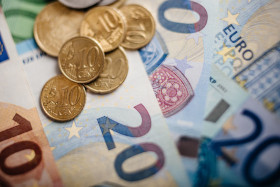While the euro managed to rebound against the US dollar today, the shared 19-nation currency remained soft against other most-traded rivals. Consumer inflation beat expectations, but that failed to bolster the currency. One of the possible reasons for the euro’s weakness was the unexpected decline of producer prices.
Eurostat reported that eurozone annual consumer inflation was expected to be at 1.7% in April. That is compared to the analysts’ median forecast of 1.6% and the previous month’s figure of 1.4%. Furthermore, core inflation, which excludes volatile components, is expected to be at 1.2%, which is also above the average forecast (1.0%) and the previous month’s reading (0.8%).
Producer prices fell 0.1% in March from February after rising at the same rate in the previous month. Economists did not expect any change.
The euro recovered against the US dollar following the release of US nonfarm payrolls. While the employment and unemployment figures were better than expected, wage inflation trailed forecasts, allowing the euro to gain on the greenback.
EUR/USD advanced from 1.1171 to 1.1193 as of 18:27 GMT today after touching the daily low of 1.1135 earlier. At the same time, EUR/GBP tumbled from 0.8570 to 0.8505. EUR/JPY edged down from 124.58 to 124.40.
If you have any questions, comments, or opinions regarding the Euro, feel free to post them using the commentary form below.
Accelerating Consumer Inflation Fails to Bolster Euro
